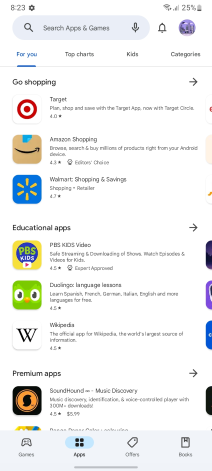Dart/Flutter course for computer science students.
- Introduction to Dart Programming Language
- Introduction to Flutter
- Developing a Flutter Application
Testing and Deployment
Deploying Flutter Applications

Digital distribution service by Google.
Deploying a Flutter application involves several steps, including building the application files and releasing the application to app stores. This article will guide you through these steps in detail.
Building APK and IPA Files
Before you can release your application, you need to build the application files. For Android, this is an APK file, and for iOS, it's an IPA file.
Building APK for Android
To build an APK file, you need to run the flutter build apk command in your project directory. This command creates an APK file in the build/app/outputs/flutter-apk/ directory of your project.
Building IPA for iOS
Building an IPA file is a bit more complex. You need to open your Flutter project in Xcode, select Generic iOS Device as the target, and then select Product > Archive from the menu. Once the archiving process is complete, you can export the archive as an IPA file.
Releasing Applications to App Stores
Once you have your APK or IPA file, you can release your application to the Google Play Store or the Apple App Store.
Releasing an Application to Google Play Store
To release your application on the Google Play Store, you need to create a Google Play Console account and pay a one-time registration fee. Once your account is set up, you can create a new application on Google Play, fill in the necessary details, and upload your APK file.
Releasing an Application to Apple App Store
Releasing an application on the Apple App Store is a bit more involved. You need to enroll in the Apple Developer Program, which has an annual fee. Once you're enrolled, you can prepare your app for submission by filling in the necessary details and uploading your IPA file. After you've submitted your app, it will go through a review process before it's published on the App Store.
Deploying a Flutter application can be a complex process, but with careful preparation and attention to detail, you can successfully release your application to the app stores. Remember to thoroughly test your application before release to ensure a smooth user experience.